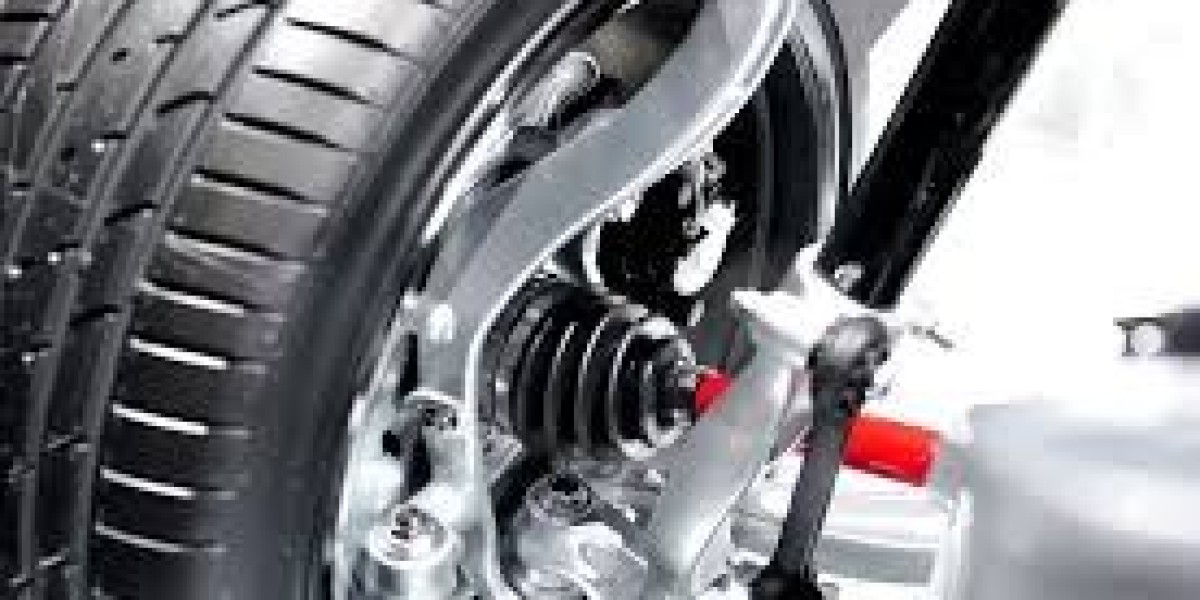There are few motoring woes as universally frustrating as a flat tyre. Whether you're rushing to work, heading out for a weekend adventure, or simply running errands, a puncture can bring your plans to an abrupt halt. The good news for drivers in Peterborough is that a flat tyre doesn't always mean a costly replacement. Thanks to a host of skilled local garages and mobile tyre services, puncture repair in Peterborough is often a quick, affordable, and highly effective solution.
The Unwelcome Surprise: What Causes a Puncture?
A puncture occurs when an object pierces the tyre, allowing air to escape. Common culprits found on Peterborough's roads and beyond include:
Nails and Screws: The most frequent offenders, often picked up from construction sites or road debris.
Sharp Metal Debris: Shards from accidents or discarded materials.
Glass Shards: Broken bottles or shattered windows.
Stones and Rocks: Larger, sharp stones can sometimes cause punctures, especially if driven over at speed.
Valve Stem Leaks: While not a puncture in the tread, a faulty or damaged valve stem can cause slow air loss.
Sidewall Damage: Though less common for repair, severe impact with a kerb or sharp object can damage the tyre's sidewall.
Regardless of the cause, a deflated tyre is a dangerous tyre, compromising your vehicle's handling, braking, and overall safety. Driving on a flat tyre, even for a short distance, can cause irreparable damage to the tyre's internal structure and even the wheel itself.
Is Your Puncture Repairable? The Peterborough Mechanic's Assessment
Not all punctures are created equal, and not all can be safely repaired. Reputable tyre specialists and car puncture repair in Peterborough adhere to strict British Standards (BS AU 159) when assessing a damaged tyre. This standard dictates what can and cannot be fixed, ensuring your safety on the road.
Here's a breakdown of the key criteria:
Location of the Puncture: This is the most crucial factor.
Repairable Zone: Punctures are generally only repairable if they are located within the central three-quarters of the tyre's tread area. This is the main contact patch with the road.
Non-Repairable Zones: Punctures or damage in the following areas usually mean the tyre needs replacement:
Sidewall: The thin, flexible side of the tyre is under immense stress and flexing constantly. A repair here would be unsafe and unlikely to hold.
Shoulder: The area where the tread meets the sidewall is also a high-stress zone.
Near the Bead: The bead is the part of the tyre that seals against the wheel rim. Damage here compromises the seal.
Size of the Puncture: The hole should generally be no larger than 6mm in diameter. Anything larger compromises the tyre's structural integrity too much for a safe repair.
Previous Repairs: A tyre that has already been repaired multiple times in close proximity may not be repairable again.
Overall Tyre Condition: The tyre must not have other forms of damage, such as:
Perished Rubber: Cracks or deterioration due to age or exposure.
Separating Tread: Where the tread blocks are lifting from the tyre carcass.
Exposed Cords: If the internal steel or fabric cords are visible.
Run-Flat Damage: If the tyre has been driven on while severely underinflated or flat, the internal structure can be irreversibly damaged, even if the external puncture seems minor. This is often not visible from the outside but can be detected by an experienced technician.
Insufficient Tread Depth: If the tyre's tread depth is already below the legal limit (1.6mm in the UK), a repair is pointless as the tyre needs replacing anyway.
When you take your car for a puncture repair in Peterborough, the technician will thoroughly inspect the tyre, both internally and externally, to make an informed decision based on these criteria. Their priority is always your safety.
The Puncture Repair Process: Getting You Back on Peterborough's Roads
If your tyre is deemed repairable, the process is straightforward and efficient, typically involving these steps:
Remove the Wheel: The first step is to carefully remove the wheel from your vehicle.
Deflate and Demount: The tyre is then fully deflated and carefully demounted from the wheel rim using specialist tyre-changing equipment. This allows for a thorough internal inspection.
Locate and Mark: The foreign object causing the puncture is located, often by submerging the tyre in water to find escaping air bubbles, and the area is clearly marked.
Internal Inspection: This is crucial. The technician will meticulously inspect the inside of the tyre for any secondary damage caused by driving on a low or flat tyre (e.g., scuffing or delamination of the inner liner). If such damage is present, the tyre is unrepairable.
Preparation of the Hole: The area around the puncture hole, on the inside of the tyre, is cleaned, buffed, and prepared to create a smooth, clean surface for adhesion. The hole itself is then reamed to create a clean, uniform channel for the repair plug.
Insert the Repair Plug/Patch: A mushroom plug or a combination patch-plug is inserted from the inside of the tyre through the puncture channel. The stem of the plug fills the hole, while the patch part forms a strong, airtight seal against the inner liner of the tyre. Some systems use a dedicated patch for the internal seal.
Seal and Cure: A special rubber cement is often used to ensure a strong bond, and the patch is firmly pressed into place. In some professional repairs, a chemical or heat curing process may be used to fully bond the repair material to the tyre.
Remount and Inflate: Once the repair is complete and cured, the tyre is carefully remounted onto the wheel rim.
Balance the Wheel: Crucially, the wheel should then be re-balanced. Removing and repairing the tyre can alter the weight distribution, and re-balancing ensures a smooth ride and prevents premature tyre wear.
Final Inspection and Pressure Check: The tyre is inflated to the correct pressure, and a final visual inspection and leak test (often using soapy water) are performed to confirm the repair is airtight.
Refit to Vehicle: The repaired wheel is then refitted to your car, and the wheel nuts are torqued to the manufacturer's specifications.
Finding Car Puncture Repair in Peterborough: Your Local Options
Puncture repair Peterborough offers a variety of convenient options for car puncture repair:
Dedicated Tyre Centres: Businesses like Kwik Fit, Halfords Autocentre, National Tyres and Autocare, and various independent tyre specialists across Peterborough are equipped with all the necessary tools and expertise for professional puncture repair. They often offer a walk-in service or allow online booking.
General Garages: Many local independent garages in Peterborough, such as Westwood Autocentre, Peterborough Motor Repairs Ltd, Vital Vehicle Care, and countless others, provide comprehensive tyre services, including puncture repair, as part of their general vehicle maintenance offerings.
Mobile Tyre Fitting Services: For ultimate convenience, several mobile tyre services operate in and around Peterborough. These companies can come directly to your home, workplace, or even the roadside (where safe to do so) to assess and repair your puncture on-site. This is particularly useful if you don't have a spare tyre or if your spare is also flat.
When choosing a service, consider:
Location and Convenience: How close are they to you? Do they offer mobile service?
Reputation and Reviews: Check online reviews or ask for recommendations.
Pricing: Puncture repair is generally very affordable, but it's always wise to get an estimate.
Adherence to Standards: Ensure they follow British Standards for repair safety.
Availability: Do they offer same-day service, or do you need an appointment?
The Cost-Benefit of Puncture Repair
Opting for a puncture repair in Peterborough is almost always significantly cheaper than buying a brand-new tyre. A typical repair might cost a fraction of a new tyre, especially if you have expensive or specialist tyres. This not only saves you money but also reduces waste, making it an environmentally friendlier choice. However, as noted, safety is paramount, and if a repair isn't safe, replacement is the only option.
Preventing Punctures (Where Possible)
While punctures are often unavoidable, you can take some steps to minimise the risk:
Regular Tyre Checks: Visually inspect your tyres regularly for embedded objects, bulges, cracks, or low pressure.
Maintain Correct Tyre Pressure: Properly inflated tyres run cooler and are less susceptible to certain types of damage. Check your pressures monthly.
Avoid Road Hazards: Where safe to do so, try to steer clear of potholes, broken glass, construction debris, and other sharp objects on the road.
Rotate Tyres: Regularly rotating your tyres can help ensure even wear, though this won't prevent punctures.
A flat tyre might be an annoyance, but thanks to the expertise of local puncture repair services in Peterborough, it doesn't have to be a major setback. Knowing the criteria for a safe repair and where to find reliable assistance means you can often get back on the road quickly, safely, and without breaking the bank. So, if you find yourself with a deflated tyre, remember that help is readily available to get you rolling smoothly once more.
4
Flat Out No More: Your Guide to Puncture Repair in Peterborough
There are few motoring woes as universally frustrating as a flat tyre. Whether you're rushing to work, heading out for a weekend adventure, or simply running errands, a puncture can bring your plans to an abrupt halt. The good news for drivers in Peterborough is that a flat tyre doesn't always mean a costly replacement. Thanks to a host of skilled local garages and mobile tyre services, puncture repair in Peterborough is often a quick, affordable, and highly effective solution, getting you back on the road with minimal fuss.
The Unwelcome Surprise: What Causes a Puncture?
A puncture occurs when an object pierces the tyre, allowing air to escape. Common culprits found on Peterborough's roads and beyond include:
Nails and Screws: The most frequent offenders, often picked up from construction sites, dropped by passing vehicles, or simply lying on the road surface.
Sharp Metal Debris: Shards from accidents, discarded materials, or even fragments from your vehicle's own components.
Glass Shards: Broken bottles or shattered windows on the road.
Stones and Rocks: Larger, sharp stones can sometimes cause punctures, especially if driven over at speed or if the tyre hits them at an awkward angle.
Valve Stem Leaks: While not a puncture in the tread, a faulty, damaged, or aging valve stem can cause a slow but steady loss of air pressure.
Sidewall Damage: Though less common for repair, severe impact with a kerb, pothole, or sharp object can cause cuts or bulges in the tyre's sidewall.
Manufacturing Defects: In rare cases, a defect in the tyre itself can lead to a leak, though this is usually covered by warranty.
Regardless of the cause, a deflated tyre is a dangerous tyre, compromising your vehicle's handling, braking, and overall safety. Driving on a flat tyre, even for a short distance, can cause irreparable damage to the tyre's internal structure and even the wheel rim itself, turning a simple repair into a much more expensive replacement.
Is Your Puncture Repairable? The Peterborough Mechanic's Assessment
Not all punctures are created equal, and not all can be safely repaired. Reputable tyre specialists and car puncture repair in Peterborough adhere to strict British Standards (BS AU 159) when assessing a damaged tyre. This standard dictates what can and cannot be fixed, ensuring your safety on the road.
Here's a breakdown of the key criteria:
Location of the Puncture: This is the most crucial factor.
Repairable Zone (Area T): Punctures are generally only repairable if they are located within the central three-quarters (typically 60-70% depending on tyre width) of the tyre's tread area. This is the main contact patch with the road and is designed to withstand a repair.
Non-Repairable Zones: Punctures or damage in the following areas usually mean the tyre needs replacement:
Sidewall: The thin, flexible side of the tyre is under immense stress and flexing constantly. A repair here would be unsafe, unlikely to hold, and could fail catastrophically.
Shoulder: The area where the tread meets the sidewall is also a high-stress zone with significant flexing, making repairs unsafe.
Near the Bead: The bead is the part of the tyre that forms an airtight seal against the wheel rim. Damage here compromises this critical seal.
Size of the Puncture: The hole should generally be no larger than 6mm in diameter. Anything larger compromises the tyre's structural integrity too much for a safe repair.
Number of Previous Repairs: A tyre that has already been repaired multiple times, especially in close proximity, may not be suitable for further repairs.
Overall Tyre Condition: The tyre must not have other forms of damage, such as:
Perished or Cracked Rubber: Signs of aging or deterioration that indicate a weakening of the tyre's material.
Separating Tread: Where the tread blocks are lifting from the tyre carcass.
Exposed Cords: If the internal steel or fabric cords are visible, the tyre's structural integrity is compromised.
Run-Flat Damage: If the tyre has been driven on while severely underinflated or flat, the internal structure can be irreversibly damaged, even if the external puncture seems minor. This internal damage is often not visible from the outside but can be detected by an experienced technician upon inspection. It is crucial never to drive on a completely flat tyre for any significant distance, as this almost always renders it unrepairable.
Insufficient Tread Depth: If the tyre's tread depth is already below the legal limit (1.6mm across the central three-quarters of the tread around the entire circumference in the UK), a repair is pointless as the tyre needs replacing anyway.
When you take your car for a puncture repair in Peterborough, the technician will meticulously inspect the tyre, both internally (by demounting it from the wheel) and externally, to make an informed decision based on these criteria. Their unwavering priority is always your safety.
The Puncture Repair Process: Getting You Back on Peterborough's Roads
If your tyre is deemed repairable, the process is straightforward and efficient, typically involving these steps, all adhering to BS AU 159:
Remove the Wheel and Tyre: The wheel is carefully removed from your vehicle, and the tyre is then fully deflated and precisely demounted from the wheel rim using specialist tyre-changing equipment. This is a critical step to allow for a thorough internal inspection.
Locate and Mark the Damage: The foreign object causing the puncture is precisely located, often by submerging the tyre in water to observe escaping air bubbles. The exact area of damage is then clearly marked.
Thorough Internal Inspection: This is perhaps the most crucial step. The technician will meticulously inspect the entire inside surface of the tyre for any secondary damage caused by driving on a low or flat tyre (e.g., scuffing, heat damage, or delamination of the inner liner). If such internal damage is present, the tyre is unrepairable, regardless of the external appearance of the puncture.
Prepare the Puncture Channel: If repairable, the area around the puncture hole, on the inside of the tyre, is cleaned, buffed, and prepared to create a smooth, clean, and textured surface for optimal adhesion. The puncture channel itself is then carefully reamed using a special carbide cutter to ensure a clean, uniform path for the repair plug.
Insert the Repair Plug/Patch (Combi-Repair): The industry best practice and BS AU 159 compliant method is the "combi-repair" or "mushroom plug." A specially designed rubber plug with an integrated patch is inserted from the inside of the tyre, through the prepared puncture channel. The stem of the plug fills the hole, while the patch part forms a strong, airtight seal against the inner liner of the tyre.
Seal and Cure: A specialised vulcanising solution (rubber cement) is applied to the prepared area, and the patch is firmly pressed and "stitched" into place using a roller to remove any trapped air bubbles and ensure a strong, permanent bond. The repair material then chemically bonds with the tyre's inner liner.
Remount and Inflate: Once the repair is complete and cured, the tyre is carefully remounted onto the wheel rim.
Balance the Wheel: Crucially, the wheel should then be re-balanced. Removing and repairing the tyre can alter the weight distribution, and re-balancing ensures a smooth, vibration-free ride and prevents premature or uneven tyre wear.
Final Inspection and Pressure Check: The tyre is inflated to the correct pressure as per your vehicle's specifications, and a final visual inspection and leak test (often using soapy water) are performed to confirm the repair is airtight and secure.
Refit to Vehicle: The repaired wheel is then refitted to your car, and the wheel nuts are correctly torqued to the manufacturer's specifications for safety.
Finding Car Puncture Repair in Peterborough: Your Local Options
Puncture repair in Peterborough offers a variety of convenient options for car puncture repair, ensuring you're never stranded for long:
Dedicated Tyre Centres: Large chains like Kwik Fit, Halfords Autocentre, National Tyres and Autocare, and various reputable independent tyre specialists such as APEX Tyres and Mr Tyre (both with strong local reviews) across Peterborough are equipped with all the necessary specialist tools and expertise for professional puncture repair. They often offer a walk-in service, online booking, and comfortable waiting areas.
General Garages: Many local independent garages in Peterborough, such as ACE Tyres (also highly reviewed for puncture repairs) and others, provide comprehensive tyre services, including puncture repair, as part of their general vehicle maintenance offerings. It's worth checking their tyre-specific reviews.
Mobile Tyre Fitting Services: For ultimate convenience, several mobile tyre services operate in and around Peterborough. Companies like Peterborough Mobile Tyre Ltd (also well-reviewed for their prompt service) can come directly to your home, workplace, or even the roadside (where safe to do so) to assess and potentially repair your puncture on-site. This is particularly useful if you don't have a spare tyre, your spare is also flat, or you're simply short on time.
When choosing a service, consider:
Location and Convenience: How close are they to you? Do they offer mobile service?
Reputation and Reviews: Check recent online reviews, particularly for puncture repair services.
Pricing: Puncture repair is generally very affordable (often ranging from £25-£45), but it's always wise to get an estimate.
Adherence to Standards: Confirm they follow British Standards (BS AU 159) for repair safety.
Availability: Do they offer same-day service, or do you need an appointment?
Additional Services: Do they re-balance the wheel after repair? This is essential for a smooth, safe ride.
The Cost-Benefit and Longevity of Puncture Repair
Opting for a puncture repair in Peterborough is almost always significantly cheaper than buying a brand-new tyre. A typical repair might cost around £25-£45, a fraction of the price of a new tyre, especially if you have expensive or specialist tyres. This not only saves you money but also reduces waste, making it an environmentally friendlier choice.
A properly executed puncture repair, performed to British Standards, can last for the remaining legal life of the tyre, which can be anywhere from seven to ten years, assuming no further damage occurs and the tyre's overall condition remains good. It is a permanent fix, not just a temporary patch.
Preventing Punctures (Where Possible)
While punctures are often unavoidable acts of misfortune, you can take some steps to minimise the risk:
Regular Visual Inspections: Get into the habit of quickly checking your tyres for embedded objects, bulges, cracks, or signs of low pressure before driving.
Maintain Correct Tyre Pressure: Properly inflated tyres run cooler, are less susceptible to certain types of damage, and provide optimal handling. Check your tyre pressures monthly using a reliable gauge.
Avoid Road Hazards: Where safe to do so, try to steer clear of potholes, broken glass, construction debris, and other sharp objects on the road.
Rotate Tyres (as recommended): Regularly rotating your tyres (as per your vehicle's manufacturer recommendations) can help ensure even wear, though this won't prevent punctures, it does help prolong overall tyre life.
A flat tyre might be an annoyance, but thanks to the expertise of local puncture repair services in Peterborough, it doesn't have to be a major setback. Knowing the criteria for a safe repair and where to find reliable assistance means you can often get back on the road quickly, safely, and without breaking the bank. So, if you find yourself with a deflated tyre in Peterborough, remember that professional help is readily available to get you rolling smoothly and safely once more.







